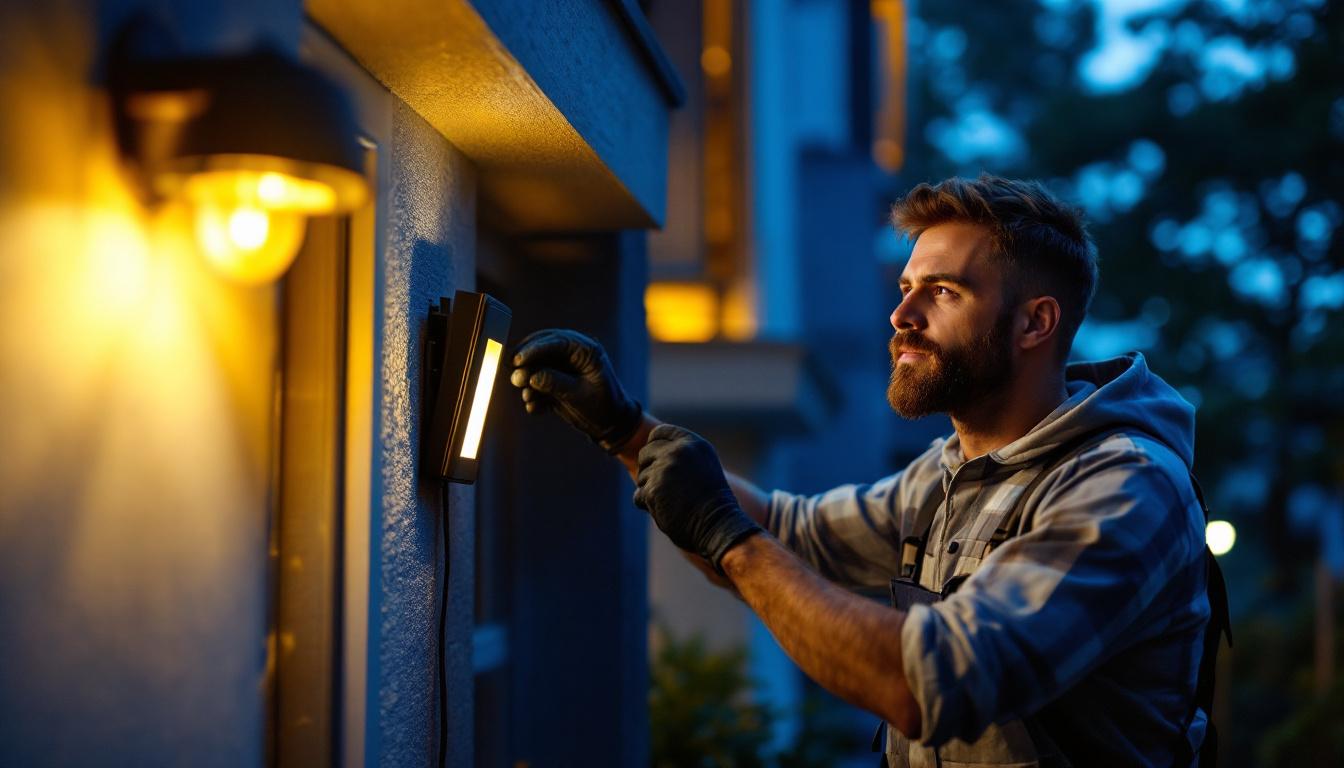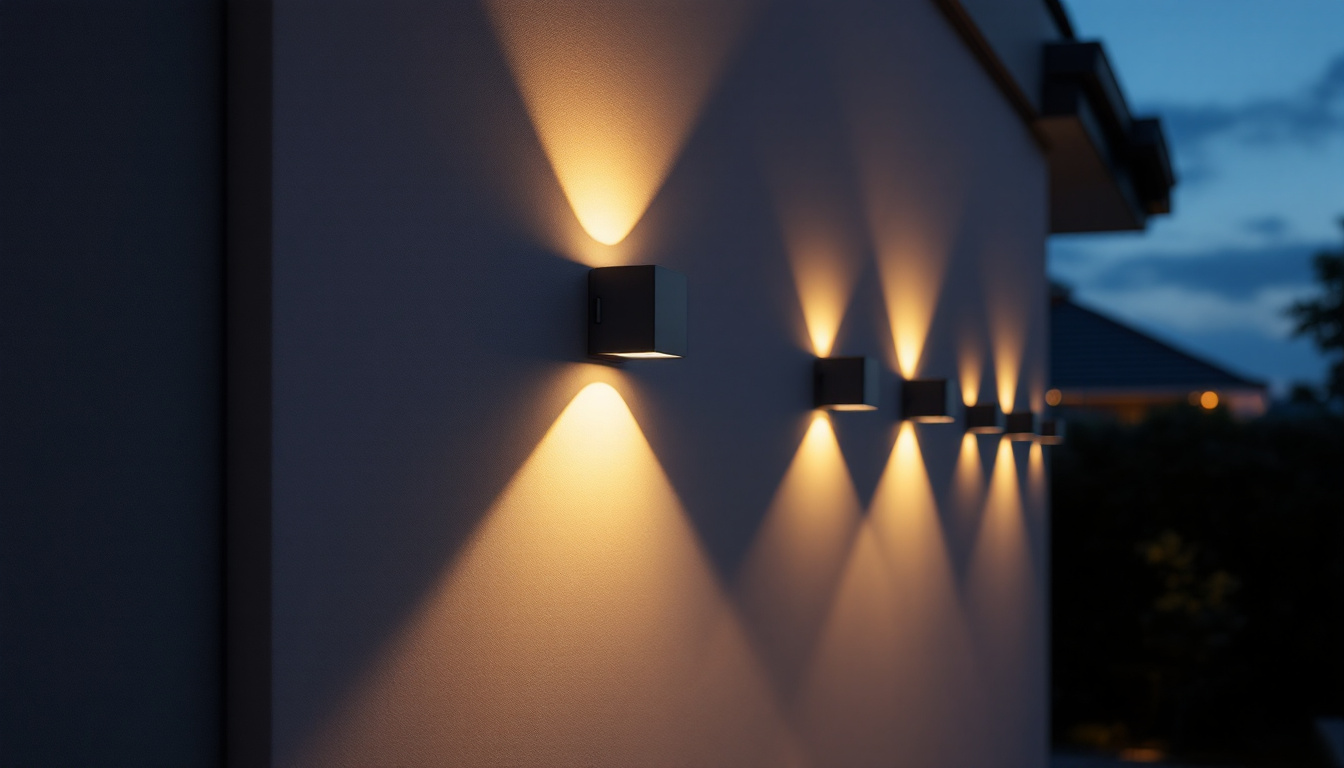
In the evolving landscape of architectural and outdoor lighting, LED technology has emerged as a transformative force. For lighting contractors, exterior LED lights represent not just a trend but a fundamental shift in how outdoor spaces are illuminated. The demand for energy-efficient, durable, and versatile lighting solutions has never been higher, and LED fixtures perfectly align with these market needs.
Statistics consistently show that LED lighting accounts for a significant and growing share of the outdoor lighting market. This growth is driven by factors such as increasing urbanization, heightened awareness about energy consumption, and stricter regulations on outdoor lighting pollution. For contractors, understanding this demand is essential to staying competitive and meeting client expectations.
Environmental concerns have become a primary consideration for many clients, from municipalities to commercial property owners. LED exterior lights consume up to 75% less energy than traditional incandescent or halogen bulbs, dramatically reducing carbon footprints. This efficiency translates into lower operational costs, a compelling selling point for budget-conscious customers.
Moreover, many regions offer incentives and rebates for installing energy-efficient lighting systems. Contractors who are well-versed in these programs can provide added value to their clients, making LED lighting projects more financially attractive. Additionally, the longevity of LED fixtures—often lasting up to 25,000 hours or more—means fewer replacements and maintenance costs over time, further enhancing their appeal. As cities and businesses strive to meet sustainability goals, the integration of LED technology becomes not just a choice but a necessity.
Furthermore, the versatility of LED lighting allows for innovative design possibilities that can enhance the aesthetic appeal of outdoor spaces. From pathway lights that guide visitors safely to accent lighting that highlights architectural features, LEDs can be tailored to fit various applications. This adaptability is particularly beneficial in urban environments where space is at a premium, and lighting must serve multiple functions, such as security and ambiance. As contractors embrace these creative opportunities, they can differentiate themselves in a competitive market, showcasing their ability to deliver customized solutions that meet the unique needs of each client.
LED technology offers a range of benefits that directly impact a lighting contractor’s success. From installation to maintenance, these advantages create opportunities for improved project outcomes and client satisfaction.
One of the most significant advantages of LED exterior lights is their lifespan. LEDs can last up to 50,000 hours or more, far exceeding the longevity of traditional lighting options. For contractors, this means fewer call-backs for replacements and repairs, allowing more time to focus on new projects.
Reduced maintenance also appeals to property owners who want reliable lighting without frequent disruptions. This reliability strengthens the contractor-client relationship and enhances reputation through consistent performance. Additionally, the durability of LEDs means they are less prone to breakage and damage from environmental factors, such as extreme weather conditions or vandalism. This resilience not only saves contractors time and money but also reassures clients that they are making a sound investment in their property’s lighting infrastructure.
LED lighting technology offers unparalleled flexibility in terms of design and application. Contractors can choose from a wide variety of fixtures, color temperatures, and beam angles to create customized lighting solutions that meet specific aesthetic and functional requirements.
From subtle pathway illumination to dramatic façade lighting, LEDs enable creative freedom that can differentiate a contractor’s portfolio. This versatility is particularly valuable in high-end residential and commercial projects where design precision is critical. Furthermore, the ability to integrate smart technology with LED systems allows for advanced features such as dimming, color changing, and scheduling, which can elevate the overall user experience. As clients increasingly seek energy-efficient and technologically advanced solutions, contractors who can offer these innovative options will stand out in a competitive market.
Exterior lighting plays a crucial role in enhancing safety and security around buildings and public spaces. LED lights provide bright, uniform illumination that reduces shadows and dark spots, deterring criminal activity and improving visibility for pedestrians and drivers.
Contractors who emphasize these safety benefits can position themselves as experts in creating secure environments, appealing to clients such as schools, hospitals, and municipal authorities. Moreover, the use of motion sensors and smart lighting controls can further enhance security measures by ensuring that lights are activated only when needed, thereby conserving energy while maintaining safety. This proactive approach not only addresses immediate security concerns but also contributes to long-term cost savings, making it an attractive proposition for budget-conscious clients.
While LED technology offers many benefits, successful implementation requires careful planning and technical expertise. Lighting contractors must consider several factors to optimize performance and client satisfaction.
Light quality and color temperature significantly affect the ambiance and functionality of outdoor spaces. LEDs are available in a spectrum of color temperatures, from warm white (2700K-3000K) to cool white (5000K-6500K).
Warm white lighting creates a welcoming, comfortable atmosphere, ideal for residential areas and hospitality venues. Cool white lighting enhances visibility and is often preferred for security lighting and commercial applications. Contractors must assess the project’s purpose and environment to select the appropriate color temperature. Additionally, the choice of color temperature can influence human behavior and mood; for instance, warmer tones are known to promote relaxation, while cooler tones can enhance alertness and productivity. Understanding these psychological effects can further guide contractors in making informed decisions that align with the intended use of the space.
Improperly designed exterior lighting can cause glare and contribute to light pollution, negatively impacting neighbors and the environment. Contractors should employ fixtures with appropriate shielding and use directional lighting techniques to minimize these issues.
Compliance with local lighting ordinances and dark sky initiatives is increasingly important. Demonstrating knowledge of these regulations not only ensures legal compliance but also positions contractors as responsible and environmentally conscious professionals. Furthermore, educating clients about the benefits of minimizing light pollution can lead to more sustainable practices, such as using lower lumen outputs or strategically placed fixtures that focus light where it is needed most. This not only enhances the aesthetic appeal of the project but also promotes biodiversity by reducing the disruption to nocturnal wildlife.
Integrating LED exterior lights with advanced control systems enhances energy savings and operational flexibility. Lighting contractors should be familiar with technologies such as motion sensors, dimmers, and smart lighting controls that allow clients to adjust lighting based on occupancy or time of day.
Properly designed power supply systems ensure consistent performance and protect LEDs from voltage fluctuations, extending their lifespan and reducing maintenance needs. Additionally, incorporating renewable energy sources, such as solar panels, can further enhance the sustainability of lighting projects. By utilizing solar-powered LED fixtures, contractors can offer clients a cost-effective solution that reduces reliance on grid electricity while also decreasing the overall carbon footprint of the installation. This forward-thinking approach not only meets the growing demand for eco-friendly solutions but also positions contractors as leaders in the evolving landscape of sustainable design.
Successful LED exterior lighting projects depend not only on product selection but also on expert installation and ongoing maintenance strategies.
Before installation, a thorough site assessment is critical. Contractors should evaluate the physical environment, existing infrastructure, and client requirements to develop a tailored lighting plan. This includes determining optimal fixture placement, wiring routes, and power sources.
Using lighting design software can aid in visualizing the final outcome and ensuring compliance with lighting standards. Early collaboration with architects, landscape designers, and electrical engineers often leads to more integrated and effective solutions.
Proper installation techniques are essential to maximize the benefits of LED exterior lights. This includes secure mounting, correct wiring practices, and weatherproofing to protect against moisture and temperature extremes.
Contractors should also consider future accessibility for maintenance when positioning fixtures and routing cables. Attention to detail during installation reduces the risk of premature failures and costly repairs.
Although LEDs require less maintenance than traditional lighting, routine inspections are still necessary to ensure optimal performance. Contractors should establish maintenance schedules that include cleaning lenses, checking electrical connections, and verifying control system functionality.
Prompt troubleshooting of issues such as flickering or dimming can prevent larger problems and maintain client trust. Offering maintenance contracts can also provide contractors with recurring revenue streams and long-term client relationships.
Incorporating LED exterior lighting into a contractor’s service offerings opens numerous avenues for business growth and differentiation in a competitive market.
Many clients may not be fully aware of the advantages of LED lighting or the potential cost savings over time. Lighting contractors who proactively educate clients through presentations, demonstrations, and detailed proposals can build credibility and increase sales.
Highlighting case studies and testimonials from successful LED projects reinforces trust and showcases expertise.
LED exterior lighting projects often intersect with other services such as landscape lighting, security system installation, and smart home integration. Contractors can leverage these synergies to offer comprehensive solutions that meet broader client needs.
Developing partnerships with suppliers and technology providers can also enhance service quality and access to cutting-edge products.
As sustainability becomes a core value for many organizations, contractors who emphasize the environmental benefits of LED lighting position themselves as forward-thinking and socially responsible. This alignment can open doors to projects with government agencies, educational institutions, and environmentally conscious businesses.
Certifications and affiliations with green building programs further enhance marketability and credibility.
For lighting contractors, embracing LED exterior lighting is more than adopting a new technology—it is a strategic move that drives business success. The combination of energy efficiency, design flexibility, longevity, and environmental benefits meets the evolving demands of clients and regulatory bodies.
By mastering the technical aspects, delivering quality installations, and effectively communicating the value of LED solutions, contractors can differentiate themselves in a competitive marketplace. LED exterior lighting is not only a key to project success but also a foundation for sustainable business growth and long-term client satisfaction.
Ready to elevate your lighting projects and outshine the competition? Discover the strategic advantage with LumenWholesale, where we provide contractors with exceptional, spec-grade LED exterior lighting products at unbeatable wholesale prices. Say goodbye to local distributor markups and hello to a vast selection of industry-standard, high-performance lighting that will set your work apart. With the added convenience of free shipping on bulk orders, LumenWholesale is your go-to source for premium lighting at the best value. Don’t compromise on quality or price. Wholesale Lighting at the Best Value is just a click away. Transform your lighting projects with LumenWholesale today!

Discover the essential lumens calculator for room size that lighting contractors rely on to perfect their projects.

Learn how to install a post light pole and effectively train your team in lighting installation.

Discover how light bulb-shaped lights are revolutionizing the industry by enhancing efficiency for lighting contractors.

Discover how LED exterior wall lights are revolutionizing the work of lighting contractors by offering energy efficiency, easy installation, and versatile design options.